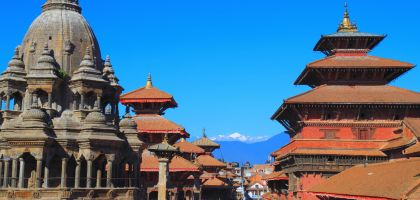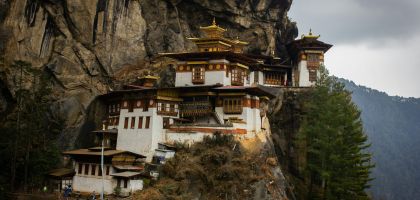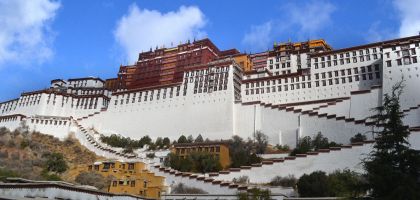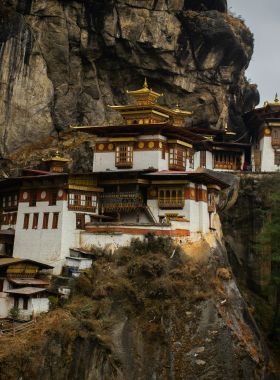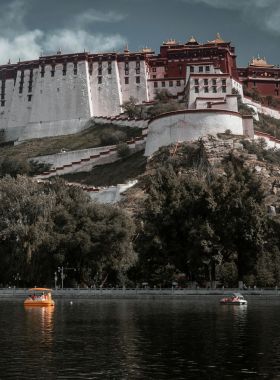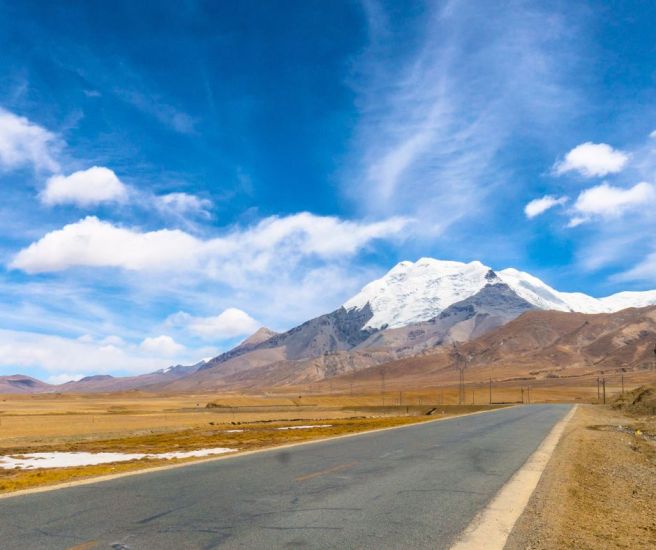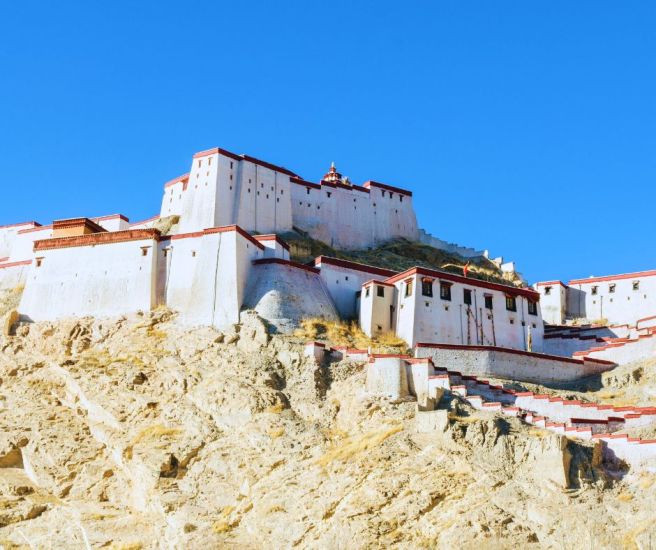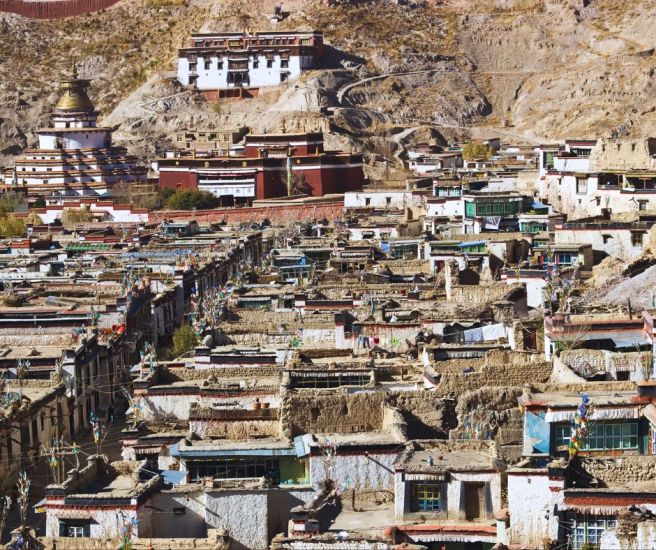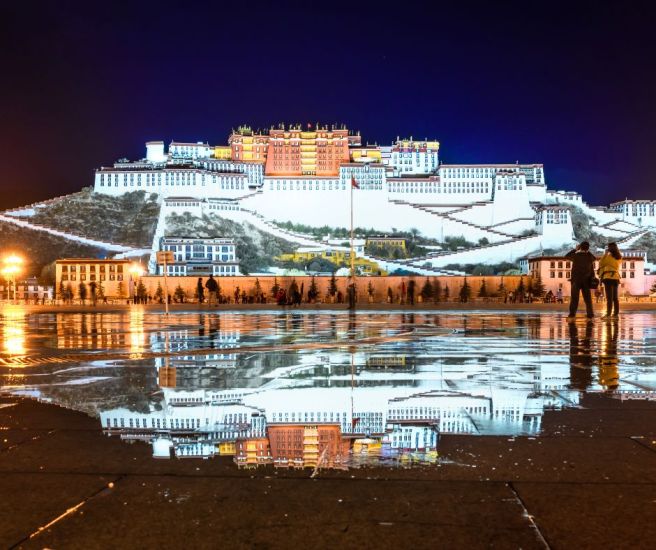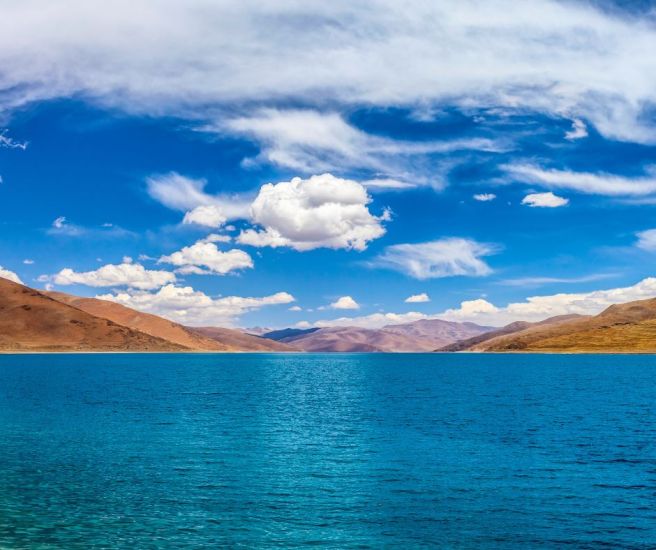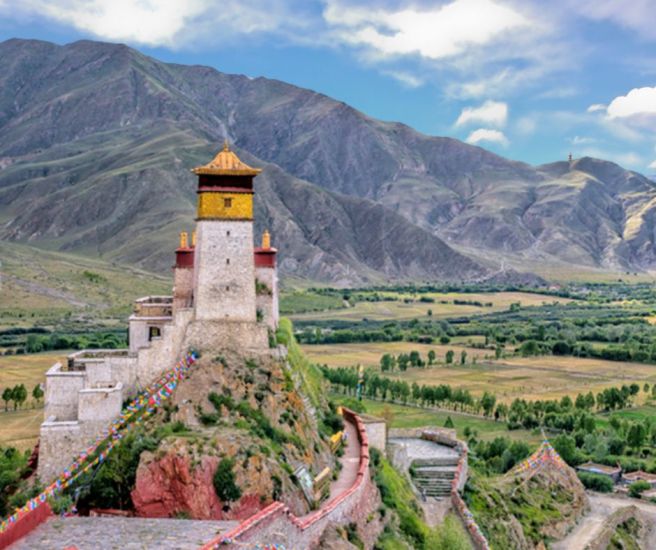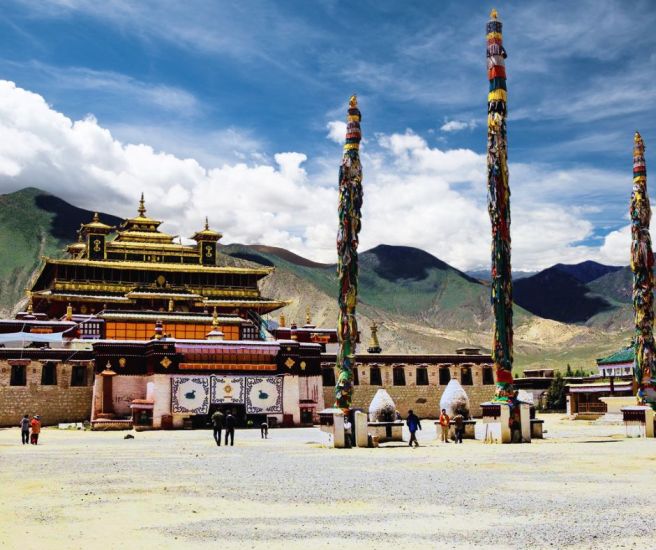Central Tibet Highlights
9 Days / Tibet
Activity
Difficulty Level
Destinations
Trip Start / End
Accommodation
Travel Style
Best time to travel
Personalized Travel Advice

Dev Raj Nepal
+977 9851096523
Detailed Itinerary
01
DAY
01
Your journey to Tibet begins with a scenic flight to Lhasa’s Gonggar Airport, either from Kathmandu, Nepal, or Chengdu, China. Upon arrival, you’ll be warmly welcomed by your Tibetan guide, who will assist with your transfer to Tsedang. The drive will take approximately 2 hours. Once you reach Tsedang, check in to your hotel and take time to rest, allowing your body to acclimate to the higher altitude.
Arrival in Lhasa and Transfer to Tsedang
Your journey to Tibet begins with a scenic flight to Lhasa’s Gonggar Airport, either from Kathmandu, Nepal, or Chengdu, China. Upon arrival, you’ll be warmly welcomed by your Tibetan guide, who will assist with your transfer to Tsedang. The drive will take approximately 2 hours. Once you reach Tsedang, check in to your hotel and take time to rest, allowing your body to acclimate to the higher altitude.
02
DAY
02
Tsedang, known as the cradle of Tibetan civilization, offers a fascinating glimpse into Tibet’s rich history. Today, you’ll explore Yambulakhang Palace, reputed to be Tibet’s oldest structure, perched dramatically on a hill and offering stunning panoramic views. Next, visit the revered Traduk Temple, one of Tibet’s earliest Buddhist temples, and explore the ancient tombs of Tibetan kings in the nearby Chongye Valley, a site rich in legends and historical significance. Return to your hotel and relax, taking in the aura of this timeless place.
Tsedang Exploration
Tsedang, known as the cradle of Tibetan civilization, offers a fascinating glimpse into Tibet’s rich history. Today, you’ll explore Yambulakhang Palace, reputed to be Tibet’s oldest structure, perched dramatically on a hill and offering stunning panoramic views. Next, visit the revered Traduk Temple, one of Tibet’s earliest Buddhist temples, and explore the ancient tombs of Tibetan kings in the nearby Chongye Valley, a site rich in legends and historical significance. Return to your hotel and relax, taking in the aura of this timeless place.
03
DAY
03
After breakfast, take on a scenic drive to Lhasa, covering 122 miles (196 km) in about 4 hours. En route, you’ll stop at Samye Monastery, Tibet’s first monastery, founded in the 8th century. A UNESCO World Heritage Site, Samye is renowned for its unique mandala layout, blending Indian, Tibetan, and Chinese architectural styles. Enjoy the serene atmosphere and captivating art before continuing to Lhasa, where you’ll check into your hotel and rest for the evening.
Drive to Lhasa via Samye Monastery
After breakfast, take on a scenic drive to Lhasa, covering 122 miles (196 km) in about 4 hours. En route, you’ll stop at Samye Monastery, Tibet’s first monastery, founded in the 8th century. A UNESCO World Heritage Site, Samye is renowned for its unique mandala layout, blending Indian, Tibetan, and Chinese architectural styles. Enjoy the serene atmosphere and captivating art before continuing to Lhasa, where you’ll check into your hotel and rest for the evening.
04-05
DAY
04-05
Over the next two days, immerse yourself in the spiritual and cultural wonders of Lhasa, the heart of Tibetan heritage. Begin with the iconic Potala Palace, a UNESCO World Heritage Site and former winter residence of the Dalai Lama. Its vast complex, perched atop Marpo Ri Hill, showcases impressive Tibetan architecture, ancient relics, and breathtaking views over the city. Continue to Norbulingka Palace, the serene summer retreat of the Dalai Lama, known for its beautiful gardens and intricate decorations. Dive deeper into Tibetan monastic life with visits to Drepung and Sera Monasteries, two of the “Great Three” Gelug university monasteries. These sacred sites offer insight into religious traditions, and if timing permits, you may witness the lively debate sessions at Sera Monastery, where monks engage in spirited philosophical discourse. At Jokhang Temple, the holiest site in Tibetan Buddhism, experience the devotion of pilgrims as they gather to worship and circumambulate Barkhor Street, a bustling market that encircles the temple. For a unique perspective, visit the Traditional Tibetan Hospital and learn about ancient healing practices rooted in holistic Tibetan medicine. In the evenings, feel free to explore Lhasa at your own pace, wandering through quiet streets or savoring the tranquil ambiance that fills the city.
Lhasa Exploration
Over the next two days, immerse yourself in the spiritual and cultural wonders of Lhasa, the heart of Tibetan heritage. Begin with the iconic Potala Palace, a UNESCO World Heritage Site and former winter residence of the Dalai Lama. Its vast complex, perched atop Marpo Ri Hill, showcases impressive Tibetan architecture, ancient relics, and breathtaking views over the city. Continue to Norbulingka Palace, the serene summer retreat of the Dalai Lama, known for its beautiful gardens and intricate decorations. Dive deeper into Tibetan monastic life with visits to Drepung and Sera Monasteries, two of the “Great Three” Gelug university monasteries. These sacred sites offer insight into religious traditions, and if timing permits, you may witness the lively debate sessions at Sera Monastery, where monks engage in spirited philosophical discourse. At Jokhang Temple, the holiest site in Tibetan Buddhism, experience the devotion of pilgrims as they gather to worship and circumambulate Barkhor Street, a bustling market that encircles the temple. For a unique perspective, visit the Traditional Tibetan Hospital and learn about ancient healing practices rooted in holistic Tibetan medicine. In the evenings, feel free to explore Lhasa at your own pace, wandering through quiet streets or savoring the tranquil ambiance that fills the city.
06
DAY
06
Today, take a scenic drive to Gyantse, a town with historical significance. The route passes Yamdrok Tso Lake, a brilliant turquoise body of water considered sacred. As you ascend two high mountain passes, Kamba La (15,700 ft) and Karo La (16,500 ft), enjoy awe-inspiring mountain vistas. Along the way, visit Drolma Lakhang Monastery and Samding Monastery, situated along the shore of Yamdrok Tso. Upon arrival in Gyantse, check into your hotel and unwind.
Lhasa to Gyantse via Yamdrok Tso
Today, take a scenic drive to Gyantse, a town with historical significance. The route passes Yamdrok Tso Lake, a brilliant turquoise body of water considered sacred. As you ascend two high mountain passes, Kamba La (15,700 ft) and Karo La (16,500 ft), enjoy awe-inspiring mountain vistas. Along the way, visit Drolma Lakhang Monastery and Samding Monastery, situated along the shore of Yamdrok Tso. Upon arrival in Gyantse, check into your hotel and unwind.
07
DAY
07
Begin your journey with an exploration of Gyantse’s treasures. Visit Pelkor Chode Monastery, a rare multi-sect monastery where various schools of Tibetan Buddhism coexist. Nearby, marvel at the Kumbum Stupa, a unique structure with layers of chapels adorned with exquisite murals and statues, representing a three-dimensional mandala. After a fulfilling morning, drive to Shigatse, Tibet’s second-largest city. Here, take a break to refresh before visiting Tashilunpo Monastery, the principal seat of the Panchen Lama, celebrated for its magnificent Buddha statue and intricate artwork that reflect Tibet’s artistic and spiritual traditions.
Gyantse Exploration & Drive to Shigatse
Begin your journey with an exploration of Gyantse’s treasures. Visit Pelkor Chode Monastery, a rare multi-sect monastery where various schools of Tibetan Buddhism coexist. Nearby, marvel at the Kumbum Stupa, a unique structure with layers of chapels adorned with exquisite murals and statues, representing a three-dimensional mandala. After a fulfilling morning, drive to Shigatse, Tibet’s second-largest city. Here, take a break to refresh before visiting Tashilunpo Monastery, the principal seat of the Panchen Lama, celebrated for its magnificent Buddha statue and intricate artwork that reflect Tibet’s artistic and spiritual traditions.
08
DAY
08
Today’s scenic drive back to Lhasa follows the Yarlung Tsangpo River. En route, you’ll stop at Yundrungling Monastery in Tradruk, a monastery of the Bon religion, offering a unique perspective on one of Tibet’s lesser-known spiritual traditions. Upon arrival in Lhasa, check into your hotel and enjoy a relaxing evening.
Return to Lhasa via the New Road
Today’s scenic drive back to Lhasa follows the Yarlung Tsangpo River. En route, you’ll stop at Yundrungling Monastery in Tradruk, a monastery of the Bon religion, offering a unique perspective on one of Tibet’s lesser-known spiritual traditions. Upon arrival in Lhasa, check into your hotel and enjoy a relaxing evening.
09
DAY
09
After breakfast, you’ll be transferred to Gonkar Airport for your departure flight, taking with you memories of an unforgettable exploration of Tibet’s spiritual and cultural treasures.
Departure
After breakfast, you’ll be transferred to Gonkar Airport for your departure flight, taking with you memories of an unforgettable exploration of Tibet’s spiritual and cultural treasures.
Includes / Excludes
Inclusions
-
Accommodation on twin sharing.
-
Daily Breakfast.
-
All transfers and sightseeing by a private air conditioned car or coach.
-
Sightseeing admission fees.
-
English speaking Tour Guide.
-
Tibet Travel Permit.
Exclusions
-
International and internal air fare.
-
Airport Taxes.
-
Chinese visa fee.
-
Lunch and dinner except as indicated.
-
Travel & Health Insurance.
-
All extra expenses caused due to nature or unforeseen events.
-
Excess baggage charges.
-
Optional tipping to local staffs, hotels etc.
-
Items of a personal nature (sodas, alcoholic beverages, laundry, telephone etc).
Trip Info
The best time to visit Tibet is from April to October, when the weather is milder, and the conditions are ideal for sightseeing and high-altitude travel. Here’s a seasonal breakdown:
Spring (April – May)
Weather: Mild temperatures with clear skies, making it excellent for sightseeing and photography. This is a perfect time for trekking and exploring monasteries, with blooming landscapes and fewer crowds.
Summer (June – August)
Weather: Warmer temperatures, though occasional rain showers may occur. Summer is the peak season, ideal for visiting sacred lakes and high passes. Additionally, many Tibetan festivals, such as the Shoton Festival, occur during these months.
Autumn (September – October)
Weather: Cool, stable, and clear skies, offering spectacular mountain views. This is considered the best season for trekking and photography, as landscapes are vivid and crowds have lessened slightly.
Winter (November – March)
Weather: Cold, especially at higher altitudes, with some areas becoming inaccessible due to snow. While challenging, winter provides unique cultural experiences with fewer tourists, and cities like Lhasa remain accessible, offering a quieter visit.
For ideal weather, clear views, and vibrant festivals, April-May and September-October are especially recommended.
Clothing
- Fleece jackets, thermal tops, and warm sweaters for cold mornings and evenings.
- Insulated, windproof, and waterproof jacket for high altitudes and unpredictable weather.
- Trekking Pants which are comfortable, durable pants for daily excursions.
- Long-sleeved and short-sleeved thermal tops and leggings for layering.
- Comfortable clothing for evenings in hotels.
- Warm Hat and Gloves which are essential for cold temperatures at high passes and early mornings.
- Scarf which is useful for dust protection on windy days.
- UV-protected sunglasses to shield your eyes from the intense high-altitude sun.
- Comfortable hiking or walking boots with good grip for exploring monasteries and uneven paths.
- Lightweight and comfortable footwear for evenings.
Accessories
- Small daypack for daily essentials, such as water, snacks, and camera.
- For hydration throughout the trip; consider a reusable filter bottle for added safety.
Travel Essentials
- Passport and Visa and Tibet Travel Permit and necessary entry visas for China or Nepal, depending on your route.
- Photocopies of Important Documents Passport, permits, and travel insurance for safekeeping.
- Travel Insurance to ensure coverage includes high-altitude trekking and emergency evacuation.
Toiletries and Personal Items
- Moisturizer and Lip Balm as the high-altitude air is dry, so hydrating skin care is essential.
- Sunscreen (SPF 50+) to protect from strong UV rays at high altitudes.
- Band-aids, antiseptic wipes, and pain relievers.
- Speak to your doctor about bringing acetazolamide (Diamox) to ease altitude sickness.
- Personal Hygiene Products
- Power Bank to charge devices on the go, as electricity may be limited in some locations.
- Adapter Plug as Tibet uses type A, C, and I plug types (220V).
Please note that Western food is not available in many local restaurants but at larger hotels, you can find them. Tibetan cuisine is hearty, flavorful, and often influenced by Buddhist traditions. Expect a lot of simple, yet filling dishes that emphasize local ingredients such as barley, potatoes, dairy, and yak meat. Most hotels and local restaurants will also cater to tourists and offer vegetarian options.
Momos: Tibetan-style dumplings, typically filled with yak meat, vegetables, or cheese, and served steamed or fried.
Thukpa: A noodle soup that can be made with vegetables or meat, providing a warm and comforting meal, especially in cooler weather.
Tsampa: A traditional Tibetan dish made from roasted barley flour, often mixed with tea or butter for a quick and easy meal.
Yak Butter Tea: A unique and traditional drink made with yak butter, tea, and salt, providing energy and warmth, particularly in the high altitudes.
Sichuan and Chinese Influence: While Tibetan cuisine dominates, you’ll also find Sichuan and Chinese influences, especially in larger cities like Lhasa.
During your stay in Lhasa, you’ll be hosted at _____________ or a similar property. This hotel offers a welcoming environment with a blend of local Tibetan design and modern amenities, providing a comfortable base for your adventures. These accommodations ensure a pleasant and immersive experience, allowing you to relax in style while staying connected to the unique culture of each destination.
In Remote Areas: In places like Tsedang, Gyantse, and Shigatse, accommodations tend to be more basic, often guesthouses or small hotels that provide cozy rooms with heating and local-style meals. While they may not have all the luxuries of larger cities, they offer an authentic Tibetan experience.
Private Vehicles
Throughout the trip, private vehicles will be used for transfers and sightseeing. These include comfortable cars or SUVs, which are good for navigating both urban and rural areas. These vehicles are chosen for their comfort and reliability, ensuring a smooth and enjoyable journey between destinations. They are equipped to handle various road conditions and provide a high level of convenience for travelers.
Minivans or Buses
For group travel of more than 8 people Buses will be used and more a group with more than 3 people, Minivans will be used. These vehicles are suitable for accommodating larger groups and offer ample space for passengers and luggage. Equipped with air conditioning and comfortable seating, these vehicles are designed to enhance travel comfort over longer distances. They also offer better stability and space for scenic drives and excursions.
Special Vehicles
For specific excursions, such as visiting remote areas or high-altitude locations, specialized vehicles may be used to navigate challenging terrains. These vehicles are equipped to handle rugged or uneven roads and provide a safe and comfortable ride in more demanding conditions.
Breathtaking Landscapes
Expect to be captivated by Tibet’s stunning landscapes, from snow-capped mountains to serene lakes like Yamdrok Tso. Scenic drives will take you through rugged terrain and high-altitude passes, offering panoramic views that will leave you in awe.
Cultural Immersion
Tibet is rich in spiritual traditions. You’ll visit sacred sites like the Potala Palace and Jokhang Temple, experiencing Tibetan Buddhism in action with monks, pilgrims, and vibrant cultural practices.
Historical Sites
Explore ancient landmarks like Yambulakhang Palace and Samye Monastery. These historical sites provide fascinating insights into Tibet’s royal and religious past.
High-Altitude Travel
Tibet’s high altitudes (over 12,000 feet) mean some acclimatization time is necessary. Expect mild symptoms like fatigue or shortness of breath, but your guide will ensure a safe and comfortable journey.
Serene Yet Vibrant Atmosphere
While Tibet offers quiet spiritual retreats, you’ll also experience lively moments, such as monk debates and bustling local markets. The peaceful yet vibrant energy of Tibet is a unique experience.
Remote Solitude
Tibet’s remote locations offer moments of solitude and peace, especially around sacred lakes and temples, allowing you to connect deeply with nature and spirituality.
Spiritual Experience
This trip offers a unique spiritual journey, where the atmosphere of Tibet’s monasteries and the devotion of its people will leave a lasting impression on your soul.
Risks
Altitude Sickness
Tibet’s high altitude (over 12,000 feet) can lead to altitude sickness. Symptoms like headaches, dizziness, and fatigue are common. Acclimatization is key, but it’s important to listen to your body and rest as needed.
Remote Locations
Many of Tibet’s attractions are in remote areas, which can make access challenging. Roads can be rough, and facilities may be basic in some regions, requiring flexibility and patience.
Weather Conditions
The weather in Tibet can be unpredictable, especially in the mountains. Sudden storms, snow, or temperature shifts are common, so being prepared with the right clothing and gear is essential.
Limited Medical Access
Medical facilities can be limited, especially outside major cities like Lhasa. It’s advisable to carry basic medical supplies and have travel insurance that covers health emergencies.
Rewards
Unmatched Natural Beauty
Tibet offers some of the most awe-inspiring landscapes on Earth. From the towering Himalayas to tranquil lakes, the natural beauty is breathtaking and unlike anywhere else.
Rich Spiritual Experience
Visiting sacred sites like Potala Palace, Jokhang Temple, and remote monasteries provides a deep connection to Tibetan Buddhism. The spiritual atmosphere and devotion of local people create a transformative experience.
Culture & Traditions
Tibet’s rich cultural heritage is visible in every corner, from traditional Tibetan customs to vibrant markets. You’ll gain insight into one of the world’s most unique and ancient cultures.
Adventure and Solitude
The rugged terrain offers incredible adventure for trekkers and explorers, while the remote locations allow for peaceful solitude. It’s a chance to disconnect and experience something truly off-the-beaten-path.
Sense of Accomplishment
Overcoming the challenges of high-altitude travel, rough roads, and limited comforts will give you a deep sense of accomplishment, making the rewards of your journey all the more meaningful.
FAQs
Personalized Travel Advice

Dev Raj Nepal
+977 9851096523
